Satya Nadella: A Better Microsoft Making The Best Now
How Satya Nadella’s progressive perspective helped Microsoft improve
Satya Nadella, the CEO of Microsoft, transformed the company’s culture by emphasising growth mindset, customer obsession, diversity, and inclusivity. Under his leadership, the company has moved from a culture where employees felt obligated to be the exclusive source of knowledge to one that values collaboration and makes the most use of a variety of perspectives.
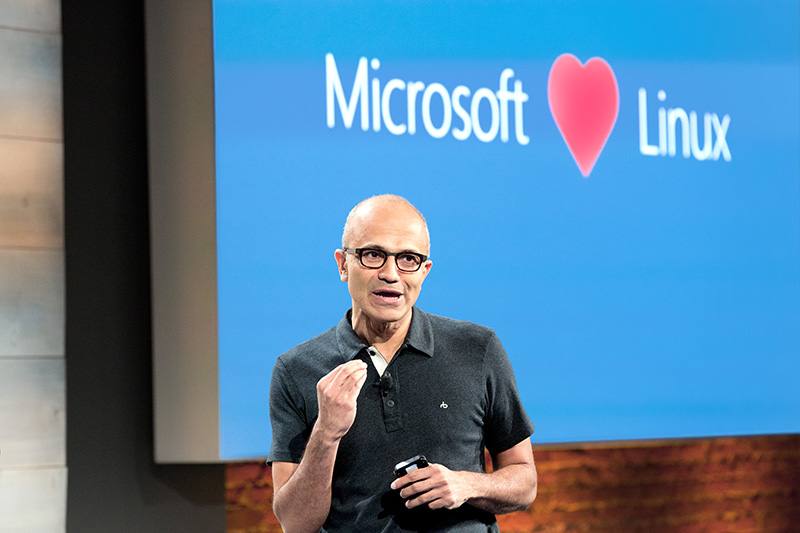
Satya Narayana Nadella is of Indian origin. He succeeded Steve Ballmer as CEO in 2014 and John W. Thompson as chairman in 2021. He currently serves as Microsoft’s executive chairman and CEO. He oversaw the development and operation of Microsoft’s computing platforms as executive vice president of the company’s cloud and enterprise group before taking on the role of CEO.
Nadella’s focus group sessions and anonymous listening to staff members at all organisational levels were key to this transformation. The company’s performance system, which moved away from a mandated ranking stack to an emphasis on teamwork and helping others succeed, was another notable change. A major initiative at the top level is a shared metrics approach, distinguishing between performance metrics and power metrics.
To achieve this cultural rebirth, Nadella made teaching his staff a top priority, as encouraged by Microsoft’s managing director for Enterprise Middle East and Africa, Wael El Kabbany, and Chief People Officer, Kathleen Hogan. Today’s top priorities for Microsoft managers are to “Model, Coach, and Care” to provide the greatest possible support for their teams and foster an atmosphere that allows workers to give their utmost.
Leaders throughout the organisation demonstrate their own growth mindset through three key competencies:
- Providing active role modelling,
- Coaching staff to be active role models, and
- Demonstrating a genuine concern for their personal development.
Microsoft’s coaching plan is well-designed, with the expectation that each leader will coach their teams and ensure the same is carried down the line.
As part of this new leadership paradigm, the manager position is being redesigned, with the newly defined job becoming evident after thousands of internal surveys and focus groups. Microsoft now enjoys 95% approval ratings on Glassdoor, one of the largest employment and recruiting sites in the world, and is ranked as one of the greatest companies to work for.
His Leadership
Many in the industry believed that Microsoft was headed towards irrelevance when Satya took over as CEO. Although Microsoft was a forerunner in the field of personal computing, it lagged behind in the cloud space, missed the mobile and search waves, and didn’t take part in the consumer social networking wave.
Microsoft was becoming less and less associated with innovation, as seen by the company’s poor stock performance, which also contributed to this perception.
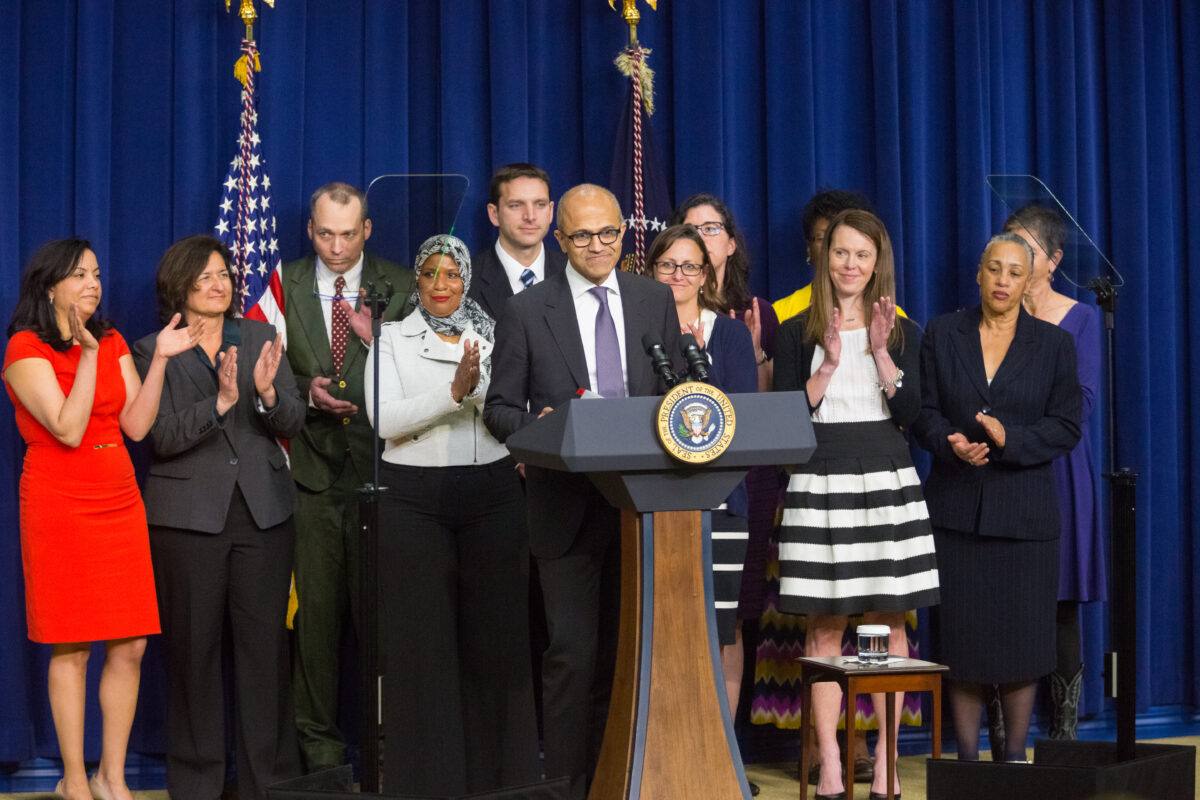
Photo Credit: Department of Labor Shawn T Moore
After ten years as the top CEO, Satya has changed all of that.
With a valuation that soared from $300 billion to $3 trillion, Microsoft is now almost as valuable as Apple around the globe. And it’s a component of the Magnificent Seven (or perhaps the Fabulous Five) that has seen their stocks soar, partly because Microsoft has jumped ahead of everyone else on the generative AI wave.
The company’s culture was transformed by Satya’s grounded, decisive, and empowering leadership style, which encouraged cooperation, creativity, and agility. Microsoft was revitalised and elevated to the top of the tech industry by this achievement, as well as Satya’s strategic focus on acquisitions, the cloud, and artificial intelligence. Both new businesses and established ones, even after several decades, can benefit from the changes we have all seen.
Changes in Culture
As the company’s CEO, Satya reset it to embrace a growth attitude, enabling employees to learn and develop while putting the needs of the customers first. This change paved the way for Microsoft’s present engagement with Open AI and promoted an innovative and collaborative culture both inside and outside the organisation. It has also unquestionably contributed to Microsoft’s consistent success over the previous ten years.
The introduction of Microsoft Office on mobile platforms, including competing with Apple and Android products, was Satya’s first major announcement as CEO. To those working for the company, that was a visceral signal that things had changed and that it was acceptable to develop for other platforms that customers were using in their digital lives. Along with this change, the old way of selling software licenses was abandoned in favour of a subscription income model, which is now pervasive throughout the whole ecosystem of consumer and business technology. Satya had no qualms about taking the business in a different direction.
Currently, nobody is flawless. And errors are made by people. The best leaders, however, own up to their errors, correct them, extend regret, and draw lessons from them. All things considered, Satya has used every effort to foster an innovative and collaborative atmosphere within the company.
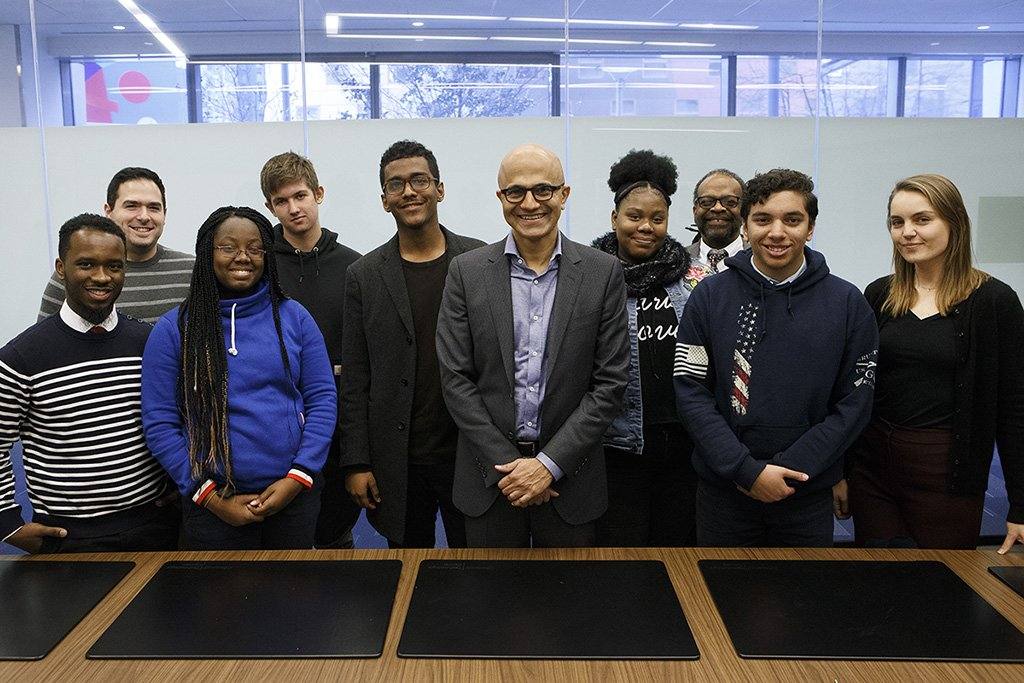
Cloud-Based Leadership
Satya Nadella’s greatest accomplishment to date has been Microsoft’s growth and success in the cloud.
The company has long been a pioneer in the server industry, but under Satya’s leadership, Microsoft embraced the future and remained laser-focused on cloud execution, taking the company and Azure to where they are today, instead of protecting what the company had at all costs.
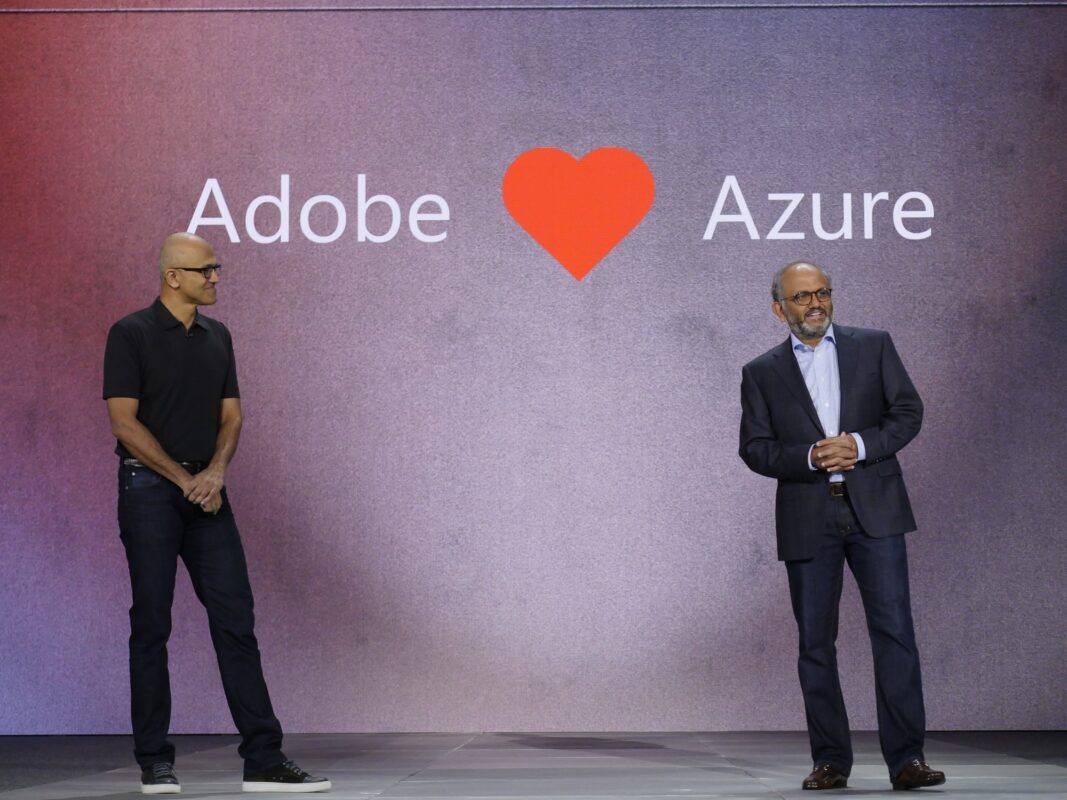
Here, Steve Ballmer laid the groundwork, but Satya saw to it that Azure, which provides businesses with consumption-based services to host apps, store data, and access other cloud-based features, grew. Microsoft changed from being a Windows-first business to a cloud-first business, thanks in large part to Satya.
Azure has developed into one of the top cloud computing platforms in the world under Satya’s direction, challenging AWS and establishing Microsoft as a major force in determining the direction of digital infrastructure. By clinging to what Microsoft had, he could have easily shot himself in the foot and fallen behind.
Promising Acquisitions
Microsoft’s success and a distinct departure from the past may be attributed in large part to Satya’s ability to identify strategic opportunities. Microsoft has bought 102 companies in the last ten years, as opposed to 128 companies in total over the preceding twenty years.
A new audience was and will be drawn into the Microsoft ecosystem by GitHub, LinkedIn, Minecraft, and the Activision acquisition. By bringing the open-source development community into the Microsoft ecosystem through the 2018 GitHub acquisition, Microsoft showed its support for open-source development and promoted collaboration. The acquisitions of Minecraft in 2016 and LinkedIn in 2016 introduced social networking for businesses and individuals that use games to create memorable experiences, respectively.
Through these purchases, Microsoft’s user base was exposed to and integrated with its productivity tools, thereby expanding its footprint.
Putting AI to the Test
Satya made an early investment in AI that has proven quite profitable. Microsoft invested $1 billion in OpenAI as a partner in 2019. At the time, there wasn’t much information available, but it was evident that Satya thought OpenAI’s strategy for incorporating AI into apps had potential.
AI-powered products also started to appear in 2021, with GitHub Copilot being the first to do so. During a dinner conversation in 2021, I recall Satya being ecstatic about GitHub Copilot’s potential, even though it was still in its early stages of development. After ChatGPT’s late 2022 launch, other copilots, such as Copilot for Microsoft 365, were released in 2023. Additionally, Microsoft strengthened their position as the industry leader for developing and executing AI applications with Azure by investing $10 billion in OpenAI at the beginning of last year.
The logic of this collaboration became abundantly evident in 2023 when Microsoft was brought up in every discussion about artificial intelligence (AI), which was being discussed by everyone from investors to consumers.
With Sam Altman, the public face of OpenAI, being fired in late 2023, the situation there reached an unexpected and captivating point. However, Satya handled it brilliantly, revealing that Microsoft was Sam and his team’s home. Microsoft made it apparent that they prevailed by standing behind Sam and OpenAI even after the matter was concluded. This was just another superb illustration of Satya’s strategic, resolute, and adept crisis management leadership.
VR/AR Is Still In Its Infancy.
With the creation of HoloLens, Microsoft made significant investments in virtual and augmented reality, in addition to other projects at Meta and Google. Apple has now entered the race. It is evident that HoloLens hasn’t yet reached its full potential and that the mass market hasn’t taken to it.
All things considered, Microsoft has undergone an absolutely amazing metamorphosis during the last ten years. Even though Steve Ballmer and Bill Gates laid the groundwork for Satya to succeed, I am excited to see where this innovative leader will take the company going forward.
Though there will undoubtedly be development and obstacles in the future, I think revolutionary change is here to stay.
Let us know more about him
Early Life
On August 19, 1967, in Hyderabad, Satya Narayana Nadella was born into a Telugu Hindu household. Prabhavati, his mother, was a Sanskrit instructor. His father, Indian Administrative Service officer Bukkapuram Nadella Yugandhar, was a 1962 batch member. Yugandhar was from the Anantapur district of Andhra Pradesh, specifically Bukkapuram. His father had moved there from Nadella village in the Guntur district (now Palnadu district) of Andhra Pradesh.
Before graduating with a bachelor’s degree in electrical engineering from the Manipal Institute of Technology in Karnataka in 1988, Nadella attended the Hyderabad Public School, Begumpet. After that, he went to the United States to study computer science for an MS at the University of Wisconsin–Milwaukee, where he graduated in 1990. In 1997, the University of Chicago, Booth School of Business awarded him an MBA.
Career
SUN MICROSYSTEMS
Before joining Microsoft in 1992, Nadella was employed as a technology staff member at Sun Microsystems.
MICROSOFT
1992–2014
Among the significant initiatives Nadella oversaw at Microsoft were the company’s transition to cloud computing and the creation of one of the biggest cloud infrastructures globally.
Nadella held positions as vice-president of the Microsoft Business Division and senior vice-president of research and development (R&D) for the Online Services Division. Afterwards, he was appointed president of Microsoft’s $19 billion Server and Tools Business, where he oversaw the shift from client services to cloud infrastructure and services in the company’s business and technological culture. He is recognised for having contributed to the Azure cloud’s integration of Microsoft’s database, Windows Server, and developer tools. When he took over in 2011, the income from Cloud Services was $16.6 billion; by June 2013, it had grown to $20.3 billion. In 2016, he was paid $84.5 million.
Nadella reportedly received a base salary of $669,167 in 2013. The entire pay, including stock bonuses, was approximately $7.6 million.
Nadella has held the following jobs in the past:
- President of the Server & Tools Division (9 February 2011 – February 2014)
- From March 2007 to February 2011, Senior Vice-President of Research and Development for the Online Services Division
- Executive Vice-President of Cloud and Enterprise Group; Corporate Vice-President of Business Solutions and Search & Advertising Platform Group; Vice-President of the Business Division
CEO (2014 – Present)
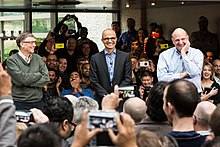
After Steve Ballmer and Bill Gates, Nadella was named Microsoft’s CEO on February 4, 2014. He is the company’s third CEO in history.
While attending a Women in Computing event in October 2014, Nadella courted controversy by saying that women should trust the system and not seek for raises. After receiving backlash for the remarks, Nadella issued an apology on Twitter. After that, he acknowledged his error in an email to Microsoft staff, writing, “Completely wrong.”
In 2014, Nadella facilitates a live conversation in San Francisco about Microsoft’s cloud strategy.
Working with businesses and technologies that Microsoft also competes with, such as Apple Inc., Salesforce, IBM, and Dropbox, has been a focal point of Nadella’s tenure at Microsoft. Unlike earlier Microsoft ads disparaging the Linux operating system, Nadella declared that “Microsoft Linux” and Microsoft became a Platinum member of the Linux Foundation in 2016.
Microsoft’s mission statement was changed to “empower every person and every organisation on the planet to achieve more” under Nadella.
At Microsoft, he oversaw a culture transformation by placing a strong emphasis on empathy, teamwork, and a “growth mindset.” He has changed Microsoft’s company culture to one that places a strong emphasis on lifelong learning and development.
2014 saw Nadella buy Mojang, a Swedish video game developer best known for the hit title Minecraft, for $2.5 billion as his first purchase with Microsoft. After that, he paid an undisclosed sum to acquire Xamarin. In 2016, he handled the $26.2 billion acquisition of the professional network LinkedIn. Microsoft paid US$7.5 billion to acquire GitHub on October 26, 2018.
Following a 14-year era of practically nil growth, Microsoft shares had gained nearly tenfold as of November 2023, with a yearly growth rate of 27%, since Nadella took over as CEO in 2014.
World of Sports
Samir Bodas, Ashok Krishnamurthi, Sanjay Parthasarathy, Nadella, Soma Somasegar, and the GMR Group acquired the Seattle Orcas cricket team, which will play in the 2023 Major League Cricket Season.
Boards and Committees
- The Business Council’s chairman from 2021 to 2022;
- the Fred Hutchinson Cancer Research Center’s board of trustees;
- the University of Chicago’s board of trustees; and
- Starbucks’ board of directors from 2017 to 2024.
Honours and Acknowledgement
- Nadella was a Time 100 honoree in 2018 and 2024.
- He received the 2019 Person of the Year and Businessperson of the Year awards from Fortune Magazine and the Financial Times.
- At the 2020 India Business Leader Awards in Mumbai, hosted by CNBC-TV18, Nadella received the title of Global Indian Business Icon.
- The third-highest civilian honour in India, the Padma Bhushan, was given to Nadella by the Indian government in 2022.
- In January 2024, the Georgia Institute of Technology granted Nadella an honorary Ph.D.
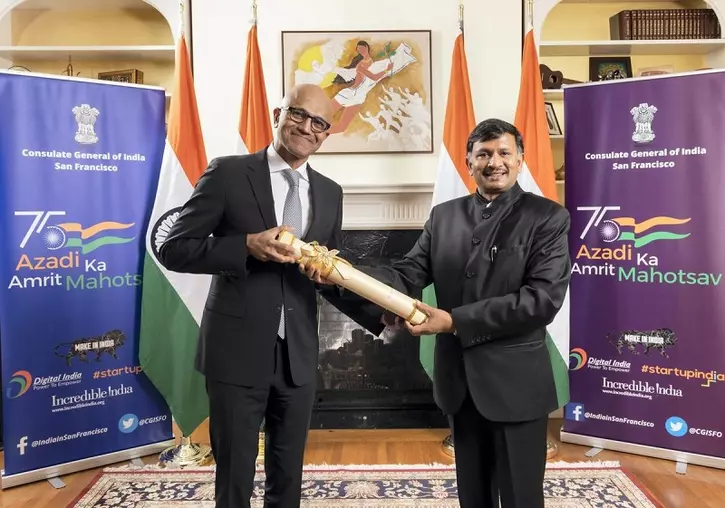
Personal Life
Nadella wed Anupama Priyadarshini in 1992; she was the daughter of his father’s IAS batchmate. Anupama and Nadella are both their parents’ only children. She was his junior at Manipal University, where she was pursuing a B.Arch in the Faculty of Architecture.
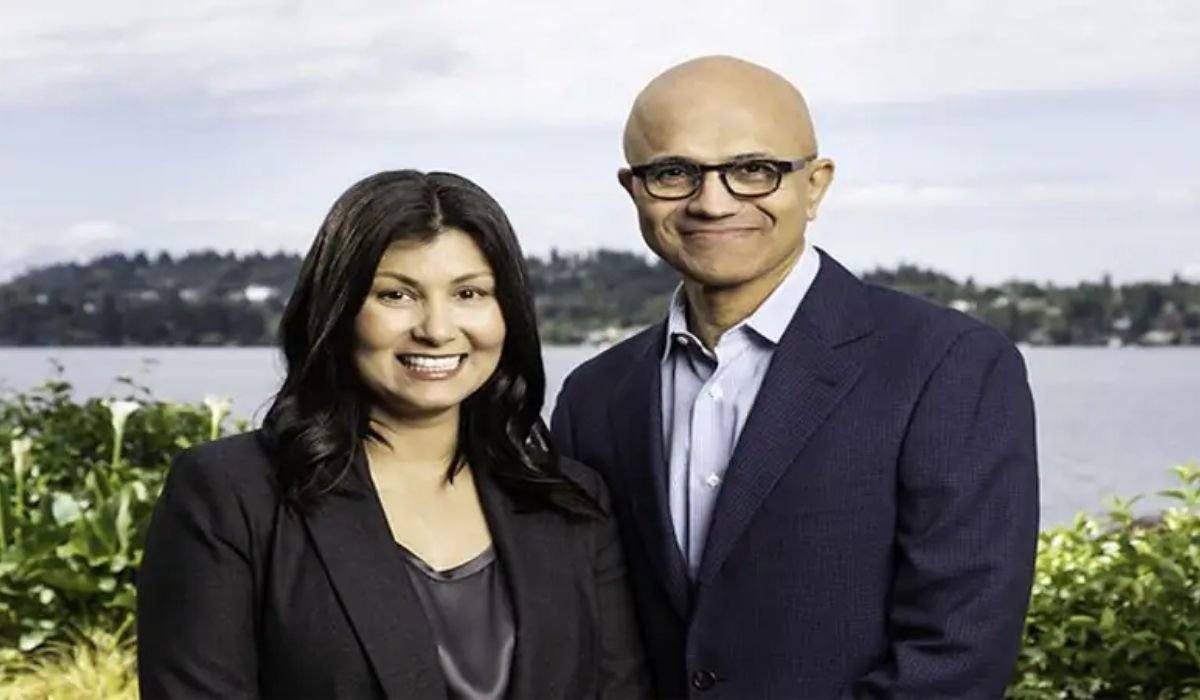
The couple now resides in Clyde Hill and Bellevue, Washington, and had three children: a son who passed away and two daughters. With cerebral palsy, his son Zain was a quadriplegic who was legally blind. At the age of 26, Zain passed away in February 2022. Nadella claims that having a child with special needs marked a turning point in his life.
Nadella played cricket for his school team and is a passionate reader of American and Indian poetry. He believes that playing cricket has helped him become a better leader.
Major League Soccer team Seattle Sounders FC is owned in part by Nadella and his spouse Anupama.
2017 saw the release of Nadella’s book Hit Refresh, which examined his time spent working at Microsoft. He declared that the book’s earnings would support nonprofit organisations by way of Microsoft Philanthropies.
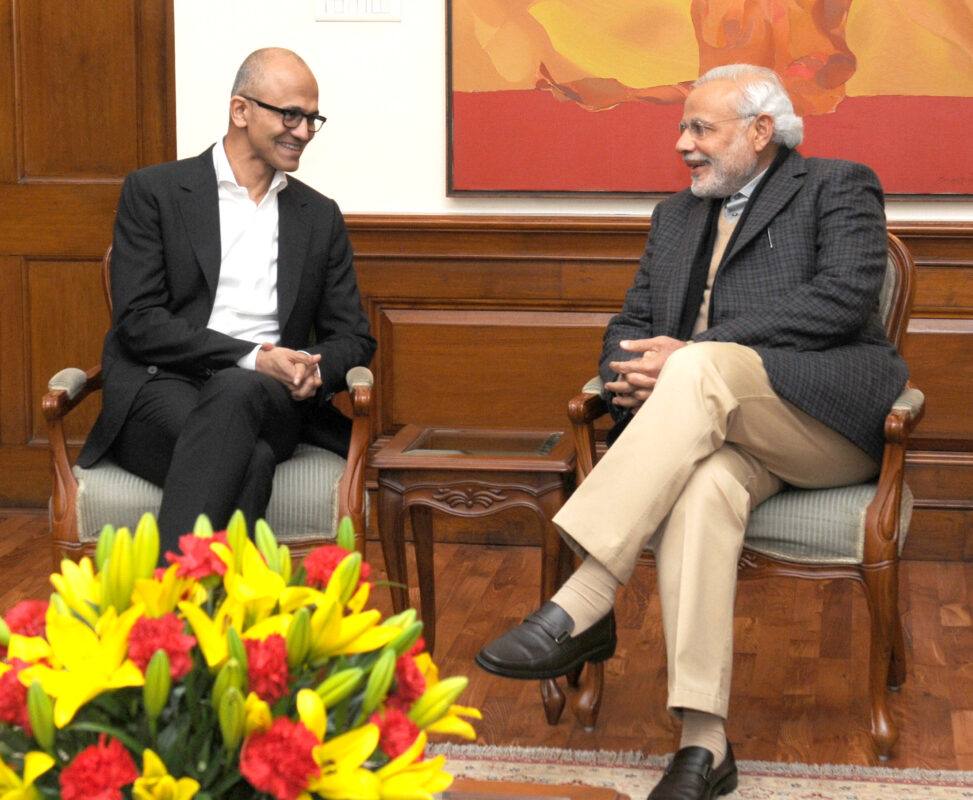

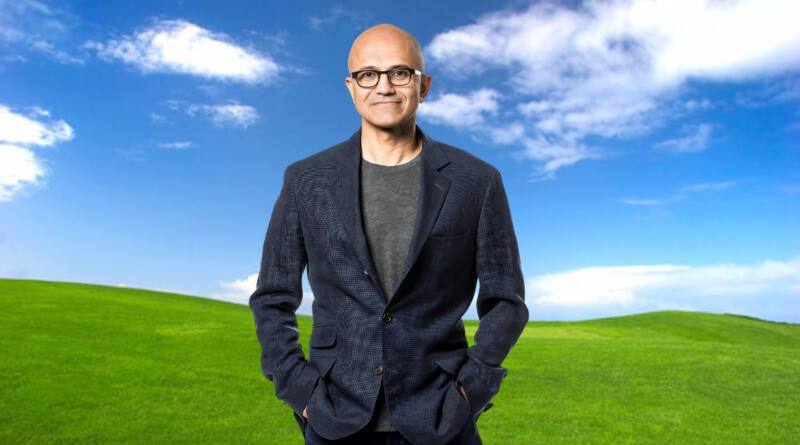
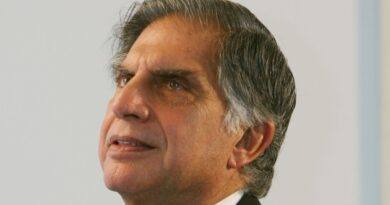
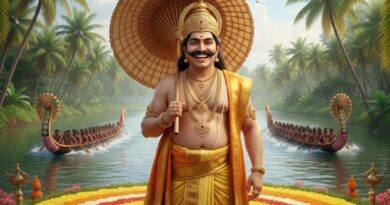

Fantastic beat I would like to apprentice while you amend your web site how could i subscribe for a blog site The account helped me a acceptable deal I had been a little bit acquainted of this your broadcast offered bright clear concept
Fantastic beat I would like to apprentice while you amend your web site how could i subscribe for a blog site The account helped me a acceptable deal I had been a little bit acquainted of this your broadcast offered bright clear concept
Wonderful beat I wish to apprentice while you amend your web site how could i subscribe for a blog web site The account aided me a acceptable deal I had been a little bit acquainted of this your broadcast provided bright clear idea